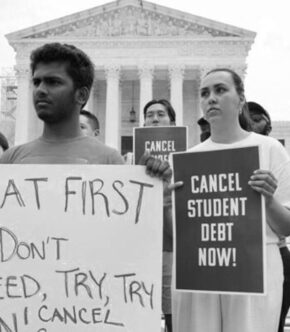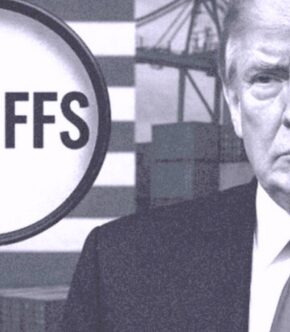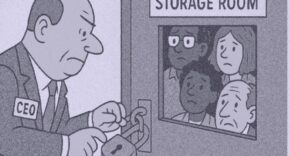Millions of Americans with student loan debt are now facing serious consequences to their credit scores as pandemic-era protections come to an end. With financial safeguards no longer in place, a growing number of borrowers are falling behind on payments. This wave of delinquencies is expected to affect credit scores, reduce borrowing power, and create lasting financial challenges for years to come.
The End of the Grace Period
During the COVID-19 pandemic, the federal government paused student loan payments and stopped reporting missed payments to credit bureaus. This emergency relief gave borrowers much-needed breathing room while they dealt with job losses, rising living costs, and other economic hardships.
Later, in 2023, the Biden administration introduced a 12-month “on-ramp” program that allowed borrowers to miss payments without immediately harming their credit scores or pushing their loans into default. However, this protection officially ended on September 30, 2024. According to a PBS News report, “The ‘on-ramp’ period helped borrowers who are struggling to make payments avoid the risk of defaulting and hurting their credit score.”
Now, without this safety net, borrowers who miss payments will once again see those delinquencies reported to credit agencies. If payments remain unpaid for nine months, loans will go into default, triggering even more serious financial consequences.
Persis Yu, deputy executive director at the Student Borrower Protection Center, explained, “The end of the on-ramp period means the beginning of the potentially harsh consequences for student loan borrowers who are not able to make payments.”
Millions Affected by Credit Score Damage
According to the Federal Reserve Bank of New York, more than 9.7 million student loan borrowers are already delinquent, meaning they are behind on their payments. Of that group, more than 9 million are expected to see their credit scores drop during the first half of 2025. In a March blog post, the New York Fed stated, “It is reasonable to expect student loan delinquency to surpass prepandemic levels when new delinquencies hit credit reports.”
More concerning, the Wall Street Journal reported that around 2 million of those borrowers are likely to fall into subprime status, which means they will have very low credit scores and may be denied future loans or face very high interest rates.
Before the pandemic, about 14 percent of student loan borrowers were behind on payments. But during the pandemic pause, credit scores actually improved for many of those who had previously struggled. With the pause lifted and payment reporting resumed, the delinquency rate has now climbed to 15.6 percent, the highest in recent history. This adds up to over $250 billion in past-due student loan debt.
A student loan delinquency can have a major effect on a person’s credit score. Borrowers with high credit scores stand to lose the most points. The New York Fed estimates that those with a score of 760 or higher could lose an average of 171 points if they become delinquent on their loans. By contrast, people with subprime scores below 620 are expected to lose about 87 points.
This kind of drop can move a borrower from a good credit category into a much lower one. That change can lead to lower credit limits, higher interest rates, and even rejections for loans or credit cards. For many, this could make it harder to buy a car, rent an apartment, or qualify for a mortgage.
The effects are not limited to borrowing. Lower credit scores can also influence job applications, security clearances, and insurance rates. In short, the end of student loan protections could create long-lasting damage far beyond student debt alone.
What Borrowers Can Do
With the end of the on-ramp program, as well as other protections like the Fresh Start program, struggling borrowers now have fewer options. Fresh Start, which allowed people who were already in default before the pandemic to get back on track, also ended on September 30.
At the same time, the Biden administration’s newest income-driven repayment plan, called the SAVE plan, has been paused by the courts. That plan would have allowed borrowers to make lower payments based on their income, and after a certain number of years, have their remaining debt forgiven. About 8 million borrowers had already enrolled in SAVE, but due to legal battles, the program is now on hold. According to PBS, “Eight million borrowers who had already enrolled in the SAVE plan don’t have to pay their monthly student loan bills until the court case is resolved.”
Borrowers who are unable to make payments may still apply for deferment or forbearance. These options allow them to temporarily pause payments. However, interest usually continues to build during this time, and those delays could affect eligibility for loan forgiveness in the future.
Abby Shaforth, director of the Student Loan Borrower Assistance Project, warned that missed payments can quickly hurt credit scores. “Once the loan hasn’t been paid for three months, loan servicers notify the credit reporting agencies that the loan is delinquent,” she said. After nine months, the loan officially enters default.
Default brings even more serious consequences. According to PBS, “Once a loan is in default, it goes into collections. This means the government can garnish wages, intercept tax refunds, and seize portions of Social Security checks and other benefit payments.”
Today, more than 43 million Americans carry student loan debt, totaling over $1.5 trillion. With fewer programs available to protect them, many are being forced to make difficult financial decisions. For those struggling to pay, experts recommend visiting the Federal Student Aid website to check for eligibility for income-driven repayment plans or deferment.
Borrowers who work in public service or for nonprofit organizations may also qualify for the Public Service Loan Forgiveness Program, which forgives student debt after ten years of qualifying payments.
Still, for millions of Americans, the end of these protections marks a turning point. Without the relief measures that were in place during the pandemic, many are now facing the harsh reality of damaged credit, mounting interest, and limited options.
As policymakers debate future solutions and legal battles continue over programs like SAVE, the financial pressure continues to grow for millions of student loan borrowers already struggling to stay afloat.











